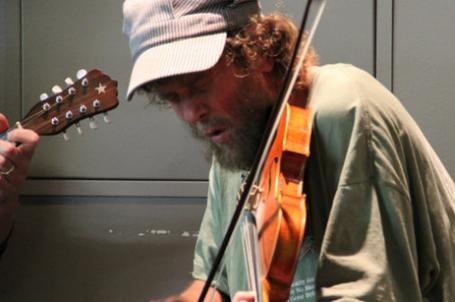This is the fourth and final post in a series on the United States and nuclear power. Read parts one, two, and three.
Fukushima gave many Americans a sense of déjà vu: In 1979, a threatened explosion at Three Mile Island Nuclear Generating Station in Pennsylvania caused by venting an explosive gas mixture was just barely warded off. Faulty design and human error were to blame. Since then, no new nuclear power plants have been built in the United States (though some that were already under construction were completed).
But the industry has soldiered on, trying to present the public with a picture of nuclear as a clean, safe, and cheap energy option. In many ways, it’s been successful: Nuclear power is now accepted as a firm element of the energy portfolio by the American political mainstream, across party lines. Under President George W. Bush, new loan guarantees were promised in 2005, and the industry celebrated that promise as a turn toward a new age of building nuclear plants. President Barack Obama has asked Congress to triple those guarantees to $54.5 billion.
Can we then look forward to a new renaissance of nuclear power in the United States, as its supporters like to claim? Unlikely, for the nuclear revival is on financially shaky ground. Exploding costs and cheap competition from natural gas are grave problems for the industry. The Wall Street banks see the new construction plans as too expensive and too risky. Even with billions in federal guarantees, American businesses can’t afford the price of nuclear power. Only a handful of new nuclear projects have moved ahead in recent years, primarily at existing nuclear plant sites in the southeastern United States.
So anti-nuke activists are not afraid of any looming wave of new nuclear reactors, despite the fantasies of the lobbyists and some politicians. But they warn of a covert renaissance by way of 20-year lifespan extensions for dozens of old power plants.
In May 2011, the Nuclear Regulatory Commission found many U.S. nuclear plants ill-prepared to handle simultaneous threats like the earthquake and tsunami that hit Fukushima. A little under one-third of the 104 U.S. reactors were said to be vulnerable to extreme emergencies.
Meanwhile, public support for nuclear power seems to be eroding. According to a recent Rasmussen Reports survey, 40 percent of likely voters in the U.S. oppose the building more nuclear power plants, while 38 percent support it. That’s a good start.
In only a few years, the cost of renewable energy will drop to the point of being fully competitive in the U.S. This country has gigantic renewable resources that other countries can only dream of. Wind power in Texas and the Midwest, biomass from the forests of New England and the Southeast, and solar power in California and neighboring Southwestern states could bring America’s new energy age into being much faster than predicted.
The nuclear lobby has been an ally in the fight for a carbon price and stricter pollution standards. But progressives, the environmental movement, and climate hawks in the United States will have to decide whether nuclear power deserves to be seen as a pillar in a clean energy strategy. In the best case, nuclear will be an unnecessary delay for a transition toward a renewable energy-based economy.



